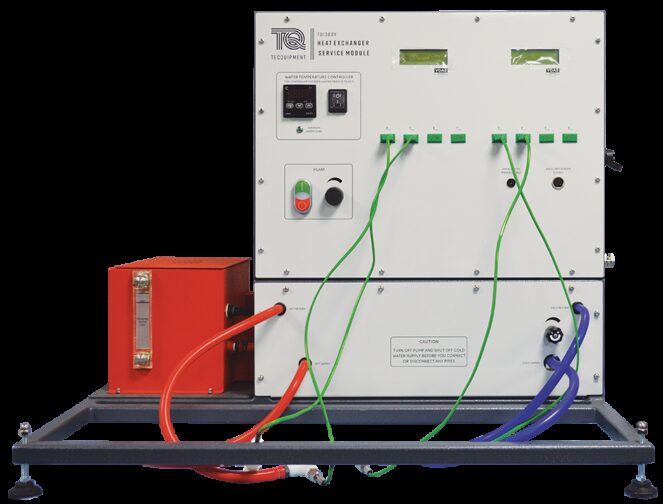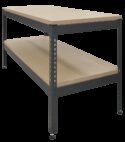Base Unit
TD1360v

HEAT EXCHANGER SERVICE MODULE
A benchtop base unit for examining and comparing small-scale heat exchangers to help students understand how they work. Requires at least one of the five associated experiments. Comes with VDAS® Onboard.
If you have any questions or you'd like to discuss a product, please call us.
+44 1159 722 611HEAT EXCHANGER SERVICE MODULE
The Heat Exchanger Service Module (TD1360V) is the core of the TD1360V range. It provides hot and cold water to the heat exchangers and all the instruments needed to measure their performance. All fluid connections to the optional heat exchangers are self-sealing quick connectors – for safety and simplicity. The hot and cold fluid streams have different connectors to reduce errors.
The services module’s hot water system includes a tank with a PID-controlled electric heater, a pump and tank level indicator. The tank has protection in case of over temperature, low water level and overfilling. The hot water system gives stable flow rates and temperatures.
The service module’s cold water circuit has a flow regulator and connection for an external mains water supply.
The cold water system has a precision valve and flow meter to control and measure the flow rate.
The hot water system has an electric controller to vary the pump speed and a second flow meter to control and measure the water flow rate.
Thermocouples at the connectors measure hot and cold inlet and outlet fluid stream temperatures. Some heat exchangers also have built-in thermocouples for extra temperature measurements. Clear, multiline digital displays show the temperatures and flow rates of the fluid streams.
Heat exchangers A, B, C and D only have the same nominal heat transfer area and wall thickness, so students can compare them directly. The cross-flow water to air heat exchanger (TD1360E) shows heat transfer by forcing air over a series of metal tubes through which water passes. As the air passes around the tubes, the heat present in the water transfers to the turbulent flow of air.
Tests can be performed with or without a computer connected. However, for quicker tests with easier recording of results, the unit comes with TecQuipment’s Versatile Data Acquisition System (VDAS® Onboard). This gives all the important readings on a computer (computer not included). Simply connect the computer with the VDAS® software (free to download from TecQuipment’s website) to the unit.
VDAS® software features include:
- Recording data manually or automatically
- Data capture set by time or intervals
- Display of real-time data, in digital form or as an analogue meter
- Real-time traces of analogue signals
- Logging data for printing and later analysis
- Exporting data for use by other software
- Performing real-time calculations to generate user-defined data
- Creating and printing charts and data tables
- Customisable layouts










